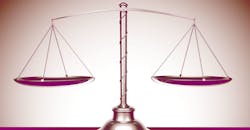“Do we need more power engineers?” is a short, simple question with a correspondingly short, simple answer: “it depends.” In this case it depends on many factors, among them how you define “power engineer,” how you assess the “right number,” and what a power engineer is worth.
This question is really a continuation of a larger discussion and major controversy that’s spanned the past 50 years, dating back to the beginnings of the engineering boom created by the demands of the Cold War and the Apollo project. That bigger question is also direct: Is there an engineering shortage, and if so, what should be done about it? And if there isn’t an engineering shortage, why do so many “experts” say there is?
On one side, companies say they can’t get enough engineers, a contention often supported by data plus anecdotes from economists and academics. On the other side, engineers say that their wages haven’t risen in real terms (which a true shortage would cause); there are often large-scale layoffs; professors just want to fill seats; and what companies really want is a large supply of engineers who are experienced, immediately able to support the project, and cheap, too.
The problem is that there isn’t an easy way to conclude what the “correct” number of engineers is; it’s analogous to asking “what’s the best op amp out there?” In the end, where you stand on the matter largely depends on where you sit, as the cliché goes. Looking back at the many forecasts from various agencies and organizations regarding technical demand in various specialties, we see that the crystal balls they use have serious internal cloudiness. Still, that hasn’t stopped them from making highly precise but often very inaccurate predications.
What about power engineers, specifically? Although the situation is fluid, one trend is clear. Fewer engineers are designing power supplies from scratch, even at the moderate currents in the range of 2 to 10 A. Among the reasons: the available “buy” options very attractive and growing, while at the same time, the do-it-yourself “make” option is becoming more challenging.
While it is not that hard to design a good supply, a good one just isn’t good enough anymore. Today’s supplies must not only provide basic functions and performance (output accuracy, line/load regulation, and wide input range, to give a few examples), but they must also provide a menu of protection features (overcurrent, under/overvoltage, thermal) as starters—and those are the easier additional demands. If DC/DC isolation is needed, that brings new requirements to achieve certification (think “creep” and “clearance”).
However, the most-challenging supply demands related to meeting efficiency and EMI/RFI performance standards, along with their increasingly stringent regulatory mandates. Even an experienced supply designer knows that squeezing that extra one or two percentage points of efficiency from a design (and doing so across a wide range of loads and operating modes) is very difficult.
At the same time, the few who do understand the intricacies of supply architectures and algorithms (SEPIC, zero-voltage switching, hysteretic control, voltage-mode control, current-mode control, valley current-mode control) have distilled their knowledge into power regulator/controller ICs. Aided by their application engineers, these ICs are combined with MOSFETs (or IGBTs) and other support components in a tested reference design with detailed BOM, layout, and credentials.
As a result, the dominant role of the power engineer is changing. Rather than designing supplies, their needed expertise is deploying them. After all, even with a very good supply which by itself meets all requirements, there are still issues of power-rail routing, IR drop, parasitics, packaging, using ferrites to suppress EMI, assessing and implementing cooling tactics…it’s a long list of what it takes to put that well-designed supply in its place without degrading its performance.
So, the answer to the first question is really dependent on why these power engineers are needed. If it is to design supplies (or converters or regulators), the answer is that there probably are enough practitioners of this elusive art, with its mix of subtleties and maybe some magic, too. If it is to be able to effectively apply a qualified design—whether into a consumer product, a server farm/data center, EV/HEV automobile, or solar-power system—the answer is that we don’t yet know. There is a lot of new territory out there and still a lot of learning going on, at all levels.
About the Author

Bill Schweber
Contributing Editor
Bill Schweber is an electronics engineer who has written three textbooks on electronic communications systems, as well as hundreds of technical articles, opinion columns, and product features. In past roles, he worked as a technical website manager for multiple topic-specific sites for EE Times, as well as both the Executive Editor and Analog Editor at EDN.
At Analog Devices Inc., Bill was in marketing communications (public relations). As a result, he has been on both sides of the technical PR function, presenting company products, stories, and messages to the media and also as the recipient of these.
Prior to the MarCom role at Analog, Bill was associate editor of their respected technical journal and worked in their product marketing and applications engineering groups. Before those roles, he was at Instron Corp., doing hands-on analog- and power-circuit design and systems integration for materials-testing machine controls.
Bill has an MSEE (Univ. of Mass) and BSEE (Columbia Univ.), is a Registered Professional Engineer, and holds an Advanced Class amateur radio license. He has also planned, written, and presented online courses on a variety of engineering topics, including MOSFET basics, ADC selection, and driving LEDs.

